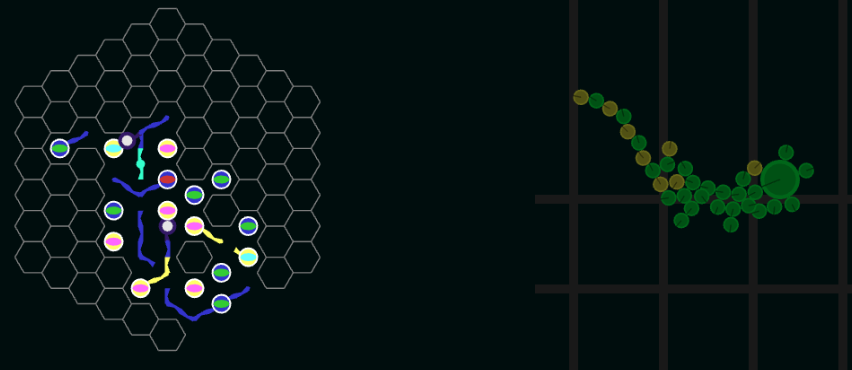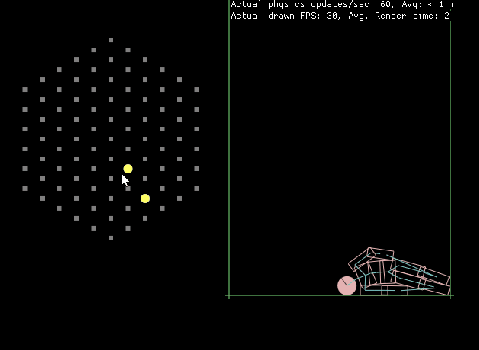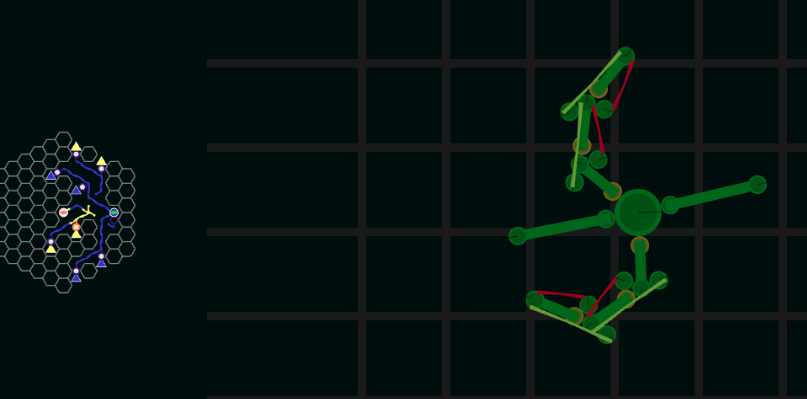Joseph Perry, also known as Wick, has a background in biology; in particular, he’s studied neurotransmitter triggers in frog brains. He’s particularly interested in biological neural networks called central pattern generators—a rhythmic output system responsible, in part, for many movement and breathing functions. “It’s an important concept for understanding any kind of behavior,” Perry told me, “but nitty-gritty brain stuff is usually treated like a black box.” That’s where Crescent Loom comes in.
“I’m hoping to pull back the curtain and show that some of the fundamental principles of the brain aren’t actually too hard to understand—and to engineer,” Perry added. Described as Kerbal Space Program (2015) crossed with Spore‘s (2008) cell stage, Crescent Loom allows players to rig up neurons to circuits, creating a little character that can dance across Crescent Loom‘s built-in obstacles.
There are three steps: create the body, wire the mind, and explore the world. Perry wanted to evoke the rocket-building system in Kerbal Space Program with players creating their creature’s body. Using a 2D editor, players can drag-and-drop body parts—from hinges to muscles—to create the creature’s structure.

For the brain, “the next step is to weave the nervous system of your creature in order to control it,” Perry said. “This may be as simple as connecting a keyboard button to a muscle: ‘when space is pressed, pull.'” After functions are applied, players will be able to explore an open-ended world with a variety of available objectives—all of which will unlock new body parts and types of neurons.
“Right now, the demo uses a criminally simplistic on/off switch for the neurons, but it would be possible to go down to the level of individual conductances across each section of cell membrane,” Perry said. “This would allow people to do cool things like copy the directional specificity of retinal starburst amacrine cells, which are able to figure out what direction light is coming from within a single dendritic arbor.”

Ultimately, though, Perry’s goal is to create a toolbox for those interested in learning about the “building blocks” of neural circuits that’s accurate and friendly enough to cultivate widespread understanding of how brains work. “I wouldn’t be surprised if people come up with solutions for neural control of movement that we haven’t yet discovered in nature,” he added.
A playable demo for Crescent Loom is available on the Wick.works website. Perry expects to launch a Kickstarter for the game in January.

